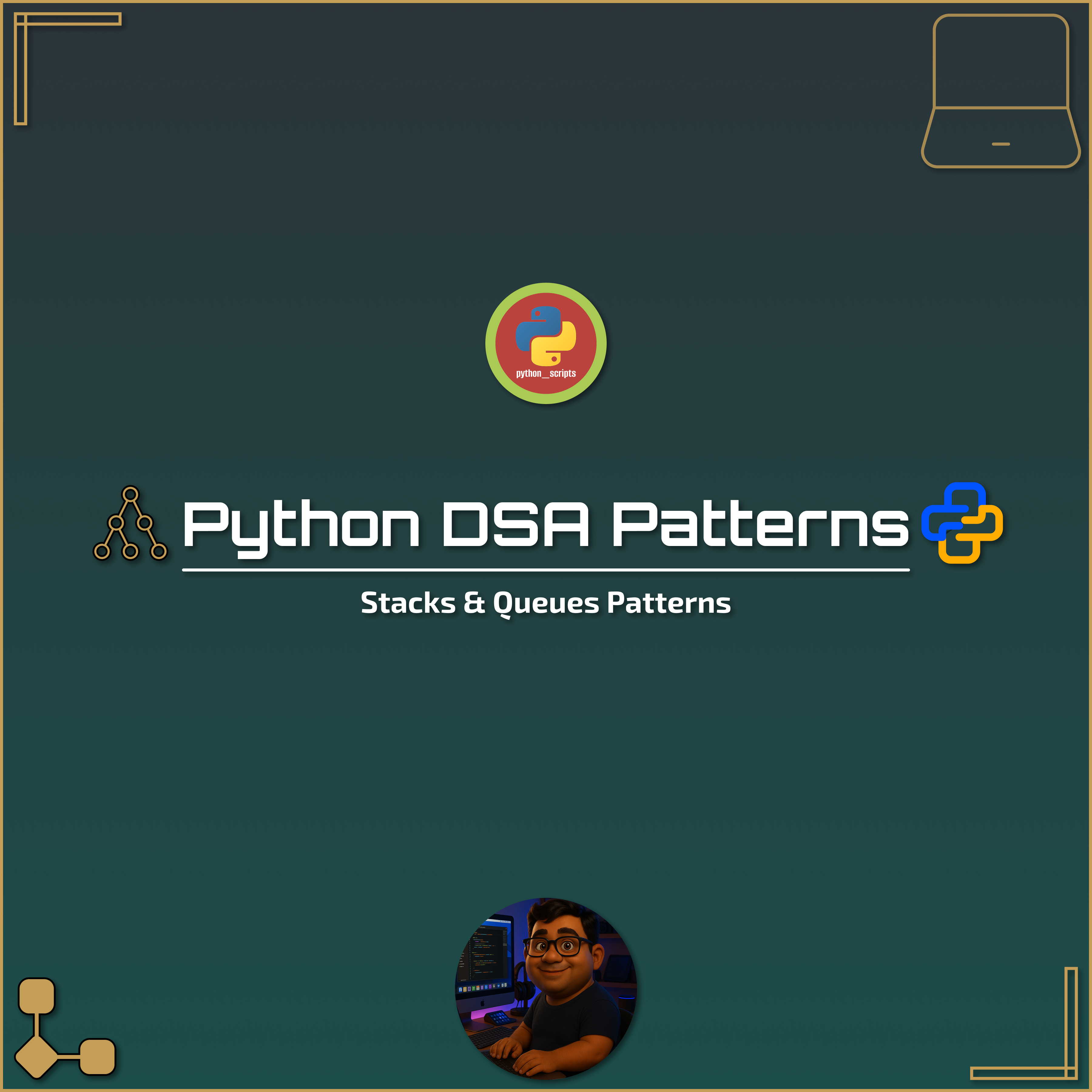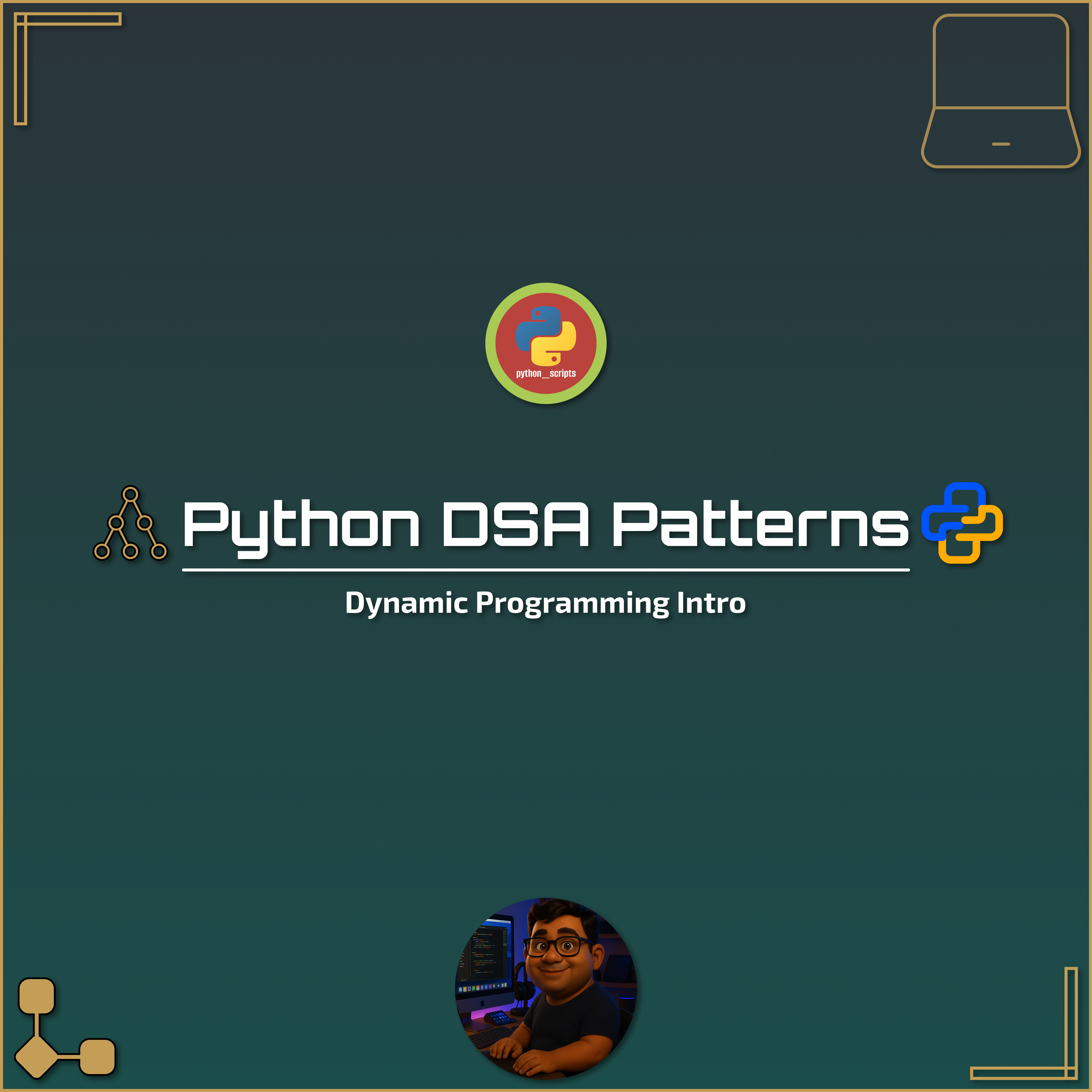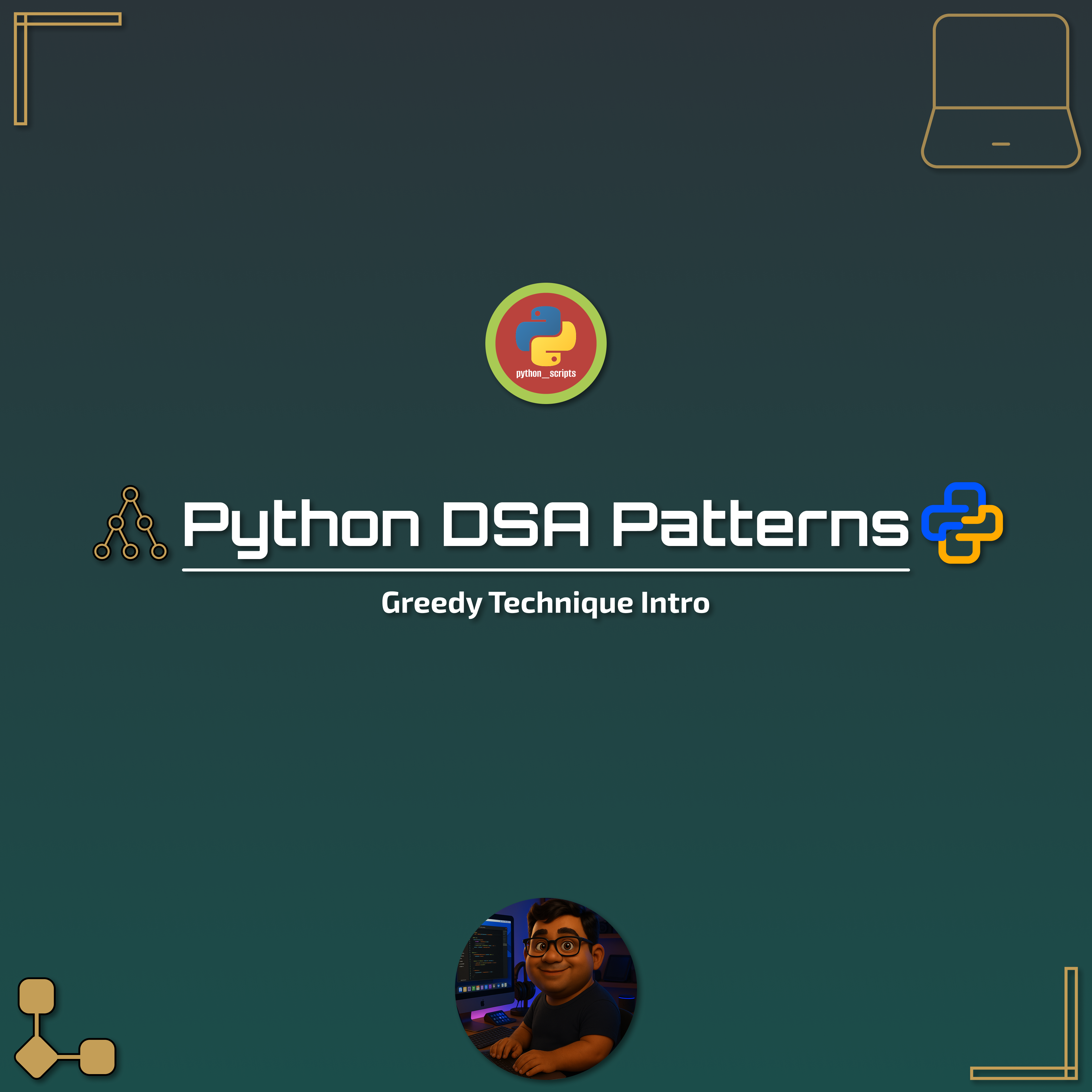🧩 Python DSA Patterns — Binary Search 🔍🐍
Posted On: September 26, 2025
Description:
Binary Search is more than just finding an element in a sorted array.
It’s a versatile pattern that applies to searching, decision-making, and optimization problems by repeatedly halving the search space.
✨ When to Use
- The input is sorted (array, matrix, or monotonic property).
- The problem asks for first/last occurrence, boundary index, or decision-based minimum/maximum.
- When brute force scanning is O(n) but you need O(log n).
⚡ Advantages
- Reduces search time from O(n) to O(log n).
- Works not only on arrays, but also on answer ranges (binary search on solution space).
- Forms the basis of many advanced algorithms (search trees, parametric search).
📝 Example 1 — Basic Binary Search
Find an element in a sorted array.
def binary_search(arr, target):
left, right = 0, len(arr) - 1
while left <= right:
mid = (left + right) // 2
if arr[mid] == target:
return mid
elif arr[mid] < target:
left = mid + 1
else:
right = mid - 1
return -1
# Example
print(binary_search([1, 3, 5, 7, 9], 7)) # Output: 3
📝 Example 2 — First and Last Occurrence
Return the first index where target appears in a sorted array.
def first_occurrence(arr, target):
left, right, result = 0, len(arr) - 1, -1
while left <= right:
mid = (left + right) // 2
if arr[mid] == target:
result = mid
right = mid - 1 # keep searching left
elif arr[mid] < target:
left = mid + 1
else:
right = mid - 1
return result
print(first_occurrence([1, 2, 2, 2, 3, 4], 2)) # Output: 1
📝 Example 3 — Search in Rotated Sorted Array
Binary search can handle rotated arrays by checking which side is sorted.
def search_rotated(arr, target):
left, right = 0, len(arr) - 1
while left <= right:
mid = (left + right) // 2
if arr[mid] == target:
return mid
if arr[left] <= arr[mid]: # left half sorted
if arr[left] <= target < arr[mid]:
right = mid - 1
else:
left = mid + 1
else: # right half sorted
if arr[mid] < target <= arr[right]:
left = mid + 1
else:
right = mid - 1
return -1
print(search_rotated([4,5,6,7,0,1,2], 0)) # Output: 4
📝 Example 4 — Binary Search on Answer Space
Find the smallest x such that xx ≥ target (integer square root).*
def integer_sqrt(target):
left, right, ans = 0, target, -1
while left <= right:
mid = (left + right) // 2
if mid * mid <= target:
ans = mid
left = mid + 1
else:
right = mid - 1
return ans
print(integer_sqrt(10)) # Output: 3
✅ Key Takeaways
- Classic Binary Search → find elements in sorted arrays.
- Modified Binary Search → first/last occurrence, rotated arrays.
- Answer Space Search → find minimum/maximum satisfying a condition.
- Think: Is the search space monotonic? If yes, binary search applies.
🏋️ Practice Problems
- Binary Search (basic element search).
- First and Last Position of Element in Sorted Array.
- Search in Rotated Sorted Array.
- Find Peak Element.
- Sqrt(x) (binary search on answer space).
Link copied!
Comments
Add Your Comment
Comment Added!




No comments yet. Be the first to comment!